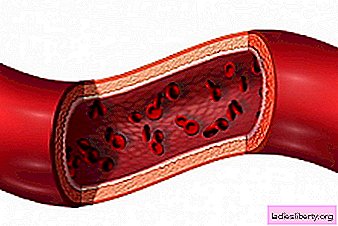
Vasculitis It is an inflammation of the walls of blood vessels that can occur with diseases such as typhus, rheumatism, and some others. The forecast can be varied. Thus, vasculitis, which is caused by hypersensitivity, in most cases proceeds benignly, limited to small skin manifestations. A person of any age can get this disease. The one exception is Kawasaki disease, which occurs exclusively in children. Vasculitis is found, both primary and secondary.
Vasculitis - causes
The causes of vasculitis can be a variety of factors. These include drugs, tumors, food products. A combination of causes may also be observed, for example, an infection and a drug. Superficial blood viscosity can lead to superficial vasculitis. Bacterial infections often lead to clinical vasculitis. All kinds of chemicals and medications often provoke vasculitis, mainly lymphocytic.
Vasculitis - symptoms
At the moment when Vasculitis affects the skin, a characteristic rash occurs. If nerves have been damaged, then to a certain extent the sensitivity of a person is violated, starting from hypersensitivity and ending with its complete loss. Due to renal vasculitis, renal failure may occur. Among the common symptoms of vasculitis can be noted weakness and fatigue, loss of appetite, pallor, fever and more.
If abdominal pain, mental disorders, muscle pain, weight loss are constantly observed, then these are characteristic symptoms for nodular vasculitis. Giant cell arteritis can cause symptoms such as very severe headaches, fever, constant weakness and weight loss, swelling in the temples and some other symptoms.
Vasculitis - diagnosis
Today, there are a huge number of different tests and analyzes that may indicate a disease such as vasculitis. For example, a blood test can show if a patient has changes in the levels of certain cells. It is especially worth paying attention to the level of hemoglobin and hematocrit. If these indicators are relatively low, then this indicates anemia, which, in turn, is a complication of vasculitis.
A biopsy is considered one of the best studies that serves to diagnose vasculitis. In this case, a small piece of tissue with a blood vessel is taken to further examine it under a microscope. It is also possible to determine vasculitis by urine tests. If protein appears in the urine, white blood cells, red blood cells, then all this indicates a suspected damage to the kidneys due to vasculitis.
Vasculitis - treatment
Treatment of this type of disease is carried out depending on concomitant diseases, as well as affected organs. As for primary allergic vasculitis, in most cases it goes away on its own, without requiring absolutely any special treatment. If vasculitis affects such important organs as the heart, kidneys or liver, then the patient will need intensive and aggressive therapy.
As a treatment for such a disease, chemotherapy, small doses of corticosteroids can be used. The goal of treatment is not only to restore the functions of the affected organs, but also to completely suppress the abnormal reaction of the nominal system, which destroys blood vessels and disrupts the usual blood supply to the body’s tissues.











